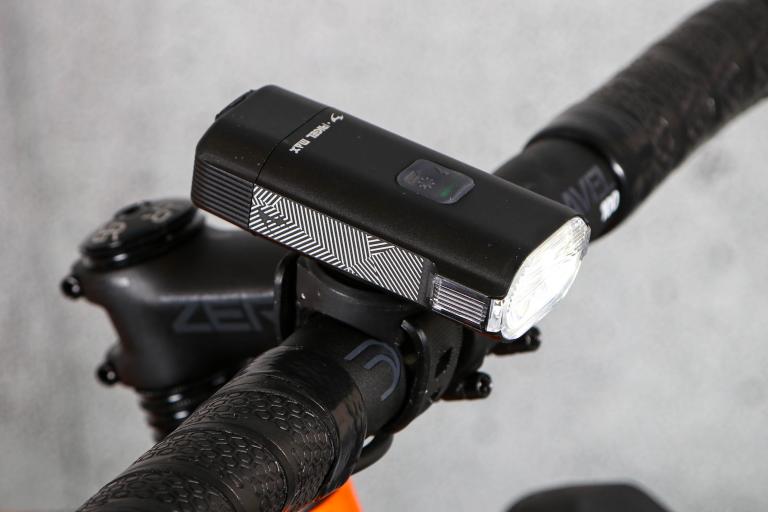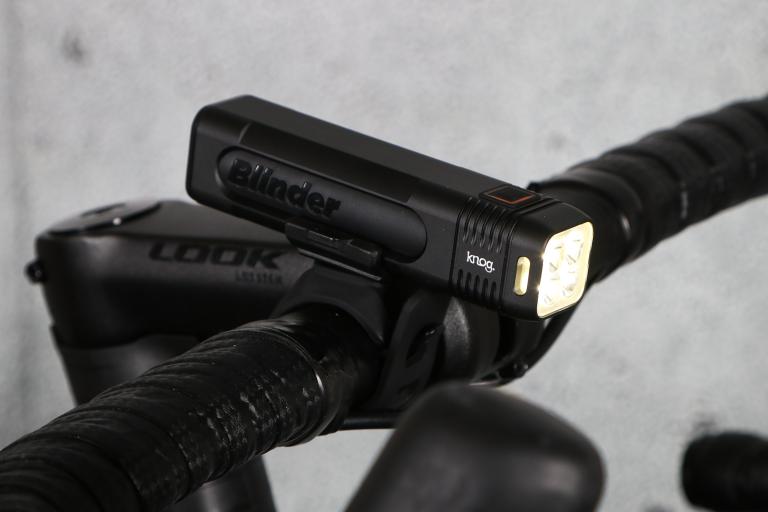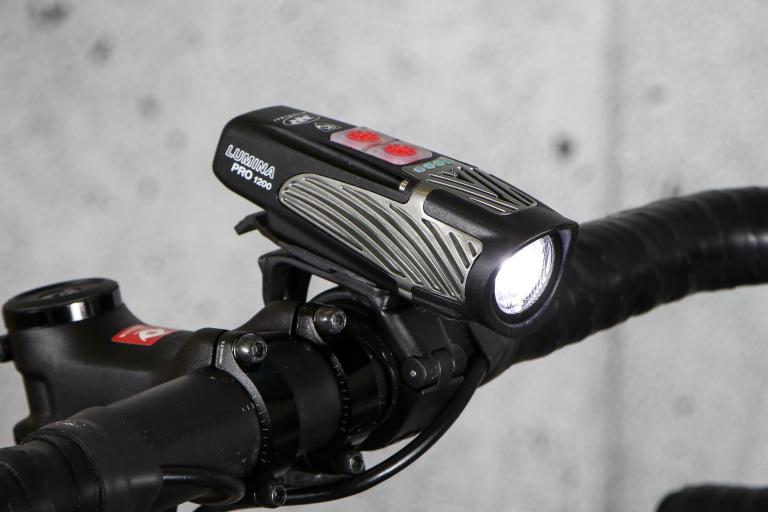- News
- Reviews
- Bikes
- Components
- Bar tape & grips
- Bottom brackets
- Brake & gear cables
- Brake & STI levers
- Brake pads & spares
- Brakes
- Cassettes & freewheels
- Chains
- Chainsets & chainrings
- Derailleurs - front
- Derailleurs - rear
- Forks
- Gear levers & shifters
- Groupsets
- Handlebars & extensions
- Headsets
- Hubs
- Inner tubes
- Pedals
- Quick releases & skewers
- Saddles
- Seatposts
- Stems
- Wheels
- Tyres
- Tubeless valves
- Accessories
- Accessories - misc
- Computer mounts
- Bags
- Bar ends
- Bike bags & cases
- Bottle cages
- Bottles
- Cameras
- Car racks
- Child seats
- Computers
- Glasses
- GPS units
- Helmets
- Lights - front
- Lights - rear
- Lights - sets
- Locks
- Mirrors
- Mudguards
- Racks
- Pumps & CO2 inflators
- Puncture kits
- Reflectives
- Smart watches
- Stands and racks
- Trailers
- Clothing
- Health, fitness and nutrition
- Tools and workshop
- Miscellaneous
- Buyers Guides
- Features
- Forum
- Recommends
- Podcast
review
 2021 Moon Rigel Pro Rechargeable Front Light.jpg
2021 Moon Rigel Pro Rechargeable Front Light.jpg£64.99
VERDICT:
A good, clever light with impressive output and battery life considering its diminutive size
Intuitive design
Small unit considering its power/battery life
Stands up to the elements
Anti-dazzling lens not as effective as some
Weight:
123g
Contact:
At road.cc every product is thoroughly tested for as long as it takes to get a proper insight into how well it works. Our reviewers are experienced cyclists that we trust to be objective. While we strive to ensure that opinions expressed are backed up by facts, reviews are by their nature an informed opinion, not a definitive verdict. We don't intentionally try to break anything (except locks) but we do try to look for weak points in any design. The overall score is not just an average of the other scores: it reflects both a product's function and value – with value determined by how a product compares with items of similar spec, quality, and price.
What the road.cc scores meanGood scores are more common than bad, because fortunately good products are more common than bad.
- Exceptional
- Excellent
- Very Good
- Good
- Quite good
- Average
- Not so good
- Poor
- Bad
- Appalling
There is a lot going on with the Moon Rigel Pro Rechargeable front light when it comes to technology – a little bit too much, possibly, for some. It features 'Intelligent Operation', which means it can activate itself in the dark and turn off when there is no movement, and you can alter the brightness in each mode, too. Even the battery life is decent for such a small light, although I'm not exactly blown away by the anti-dazzling lens.
Keeping things simple, the Rigel Pro has just two static modes, which are pre-set at 1,000 lumens and 350 lumens, so you have a kind of main and dipped beam.
I say pre-set because, unlike a lot of other lights, you can actually tweak the lumen output using Moon's VLS, or Variable Lumen System. This lets you set the ideal amount of output should you be going for illumination or being frugal with the battery life.
> Find your nearest dealer here
For instance, 1,000 lumens is great for riding on unlit country lanes, but on larger main roads with cat's-eyes and road markings it's overkill, but 350 lumens might not be quite enough. Using the VLS you can tweak that second mode up to, say, 700 lumens.
It's a bit of guesswork as you don't have any LCD display or anything to tell you where you are in terms of lumens, but once you've scrolled up and down a couple of times you get the hang of it.
If you've read my front light reviews over the years, you'll know how tedious I find it to have to scroll through flashing modes to get back to the brighter static ones.
Well, amongst a few others, Moon has got the memo and has kept its static modes separate from the flashing ones. A double-click on the button swaps between the two.
Flashing modes include Flash 1, Steady Flash, Day Flash and SOS.
For such a small light and the output, the battery life is pretty impressive. Using the full 1,000 lumens you'll get 1.5hrs, the same as the Cateye AMPP 500 I was testing alongside can deliver with half the lumens. At 350 lumens you'll get 3.5hrs.
Lens
Moon has created a kind of refracted lens to stop dazzling oncoming drivers or cyclists, noticeable by way of the ridges on the upper half of the lens. If you mount the light underneath the handlebar, you can flip the lens over, cool trick.
It does work, to a degree. You are still left with quite a central spot but with more light spreading out in front of the wheel compared with what is being shone up into the trees.
It's not as good as the T-shaped beam found on the Ravemen CR lights, which really gives a flat top to the beam, but out on the road, it does pretty well. There is a good amount of light thrown directly forward, with a reasonable spread out to the sides, though it's not the best I've used – I'd like a wider beam across the road or lane, rather than being so focused on the centre.
Operation
Controlling the light is no different to many others, with just a single button for operation. It also displays mode and battery life.
If you find turning a light on and off a bit of a chore, you can switch the Moon to Intelligent Operation (IO), done by pressing the button for three seconds with the power off. In IO mode the Rigel Pro detects darkness and turns itself on, ideal for riding through heavily shaded areas or tunnels during the day, or if your commute starts in daylight and finishes in the dark, or vice versa.
It doesn't get fooled by artificial light either, so don't panic when you're cruising under streetlights.
The Rigel Pro also has an Intelligent Motion Sensing Function, which means if it detects no movement for 20 seconds it'll switch to 10 lumens, after 60 seconds it'll go to standby, and after an hour of nothing it goes into a deep sleep.
The Moon uses a Garmin style bracket to mount it to your bike. In the box you'll find a wristwatch style band which will fit a huge range of handlebar diameters. It's simple to set up and holds secure – even rough roads didn't see it spinning around the handlebar.
You also get a GoPro adaptor, which allows you to fit the Moon where you might a GoPro, below a Garmin mount or whatever.
A light needs to be able to fight off the crap weather of winter and the Rigel Pro does this with an impressive rating of IPX7. That means it'll withstand being submersed in water at a depth of one metre for half an hour, so heavy rain isn't an issue. It's sailed through the latest storms and me attacking it with the bathroom shower.
Value
The £64.99 RRP is competitive, but not necessarily the best when it comes to all-round illumination. It is well made, though, and it's good to see an aluminium alloy body.
It's also a good deal cheaper than the 700-lumen Knog PWR 700L at £99.99, although when you use our beam comparison engine there is very little in it in terms of brightness.
> Buyer’s Guide: The best 2021/22 front lights for cycling
The Cateye AMPP 800 is the same money as the Moon (it's gone down since George reviewed it in 2019), and while its lumen-count is lower on paper, on our beam comparison engine it looks to have a bit more punch both from the central spot and the spread towards the sides.
Blackburn's Dayblazer 1000 is also £64.99. We have a full review to come, but again our beam comparison engine shows it has more light when it comes to the beam spread.
Conclusion
There are certainly lights out there with slightly better beam patterns, but overall it's impressive to find a light this well made and with 1,000 lumens for this sort of money. If you like your gadgets to be quite techy then you'll be impressed with everything that the Rigel Pro can do as well.
Verdict
A good, clever light with impressive output and battery life considering its diminutive size
road.cc test report
Make and model: Moon Rigel Pro Rechargeable Front Light
Size tested: 1000 lumens
Tell us what the light is for, and who it's aimed at. What do the manufacturers say about it? How does that compare to your own feelings about it?
The Moon Rigel Pro is a high-powered road light. It comes with an anti-dazzle lens and other clever technology that makes it adjustable and customisable.
Tell us some more about the technical aspects of the light?
Moon lists:
6 modes:
MODE 1 / MODE 2 / FLASH 1 / FLASH 2 / DAY FLASH / SOS
ANTI-DAZZLING lens ( Rotatable)
INTELLIGENT OPERATION
Intelligent brightness function
Intelligent motion sensing function
Parking
CNC Aluminium heat sink
Lock mode
Day flash mode
Mode memory function
Variable lumen system
Quick release GARMIN style bracket
Low battery,charging and fully charged indicator
Automatic fully charged cut-off system
High precision optical lens
Side visibility
USB Type-C remote control system
USB Type-C charging cable
Water resistant USB port
Water resistant (IPX 7)
Rate the light for quality of construction:
8/10
Rate the light for design and ease of use. How simple was the light to use?
7/10
With all its options it takes a little bit of getting used to, but once you have it set up, it's simple to use.
Rate the light for the design and usability of the clamping system/s
7/10
Rate the light for waterproofing. How did it stand up to the elements?
9/10
IPX7 means you should have no hassle in any weather.
Rate the light for battery life. How long did it last? How long did it take to recharge?
8/10
Good battery life considering the high output.
Rate the light for performance:
7/10
Rate the light for weight:
8/10
Rate the light for value:
6/10
Tell us how the light performed overall when used for its designed purpose
It works well. It's relatively easy to operate, and the VLS allows you to change the brightness of the modes to your liking.
Tell us what you particularly liked about the light
Good power output and run-times for its size.
Tell us what you particularly disliked about the light
Beam pattern is a little too focused on the centre.
How does the price compare to that of similar products in the market, including ones recently tested on road.cc?
It's competitive against some other quality lights like the Blackburn Dayblazer 1000 and Cateye AMPP 800 mentioned in the review.
Did you enjoy using the light? Yes
Would you consider buying the light? Yes
Would you recommend the light to a friend? Yes
Use this box to explain your overall score
It's a good all-round light that is well made and comes loaded with technology. It's impressively weatherproof too. It's also priced well against the competition, although some arguably have a slightly better beam pattern.
About the tester
Age: 42
I usually ride: This month's test bike My best bike is: B'Twin Ultra CF draped in the latest bling test components
I've been riding for: Over 20 years I ride: Every day I would class myself as: Expert
I regularly do the following types of riding: time trialling, commuting, club rides, sportives, fixed/singlespeed,
Since writing his first bike review for road.cc back in early 2009 senior product reviewer Stu has tested more than a thousand pieces of kit, and hundreds of bikes.
With an HND in mechanical engineering and previous roles as a CNC programmer/machinist, draughtsman and development engineer (working in new product design) Stu understands what it takes to bring a product to market. A mix of that knowledge combined with his love of road and gravel cycling puts him in the ideal position to put the latest kit through its paces.
He first made the switch to road cycling in 1999, primarily for fitness, but it didn’t take long for his competitive side to take over which led to around ten years as a time triallist and some pretty decent results. These days though riding is more about escapism, keeping the weight off and just enjoying the fact that he gets to ride the latest technology as part of his day job.









The highway code doesn't say "If you are approaching a cyclist from behind sound your horn"....
Erm... You forgot to mention The Tyne Tunnel opened in 1951!!!...
Always? So the guy is asked to appear on a podcast to discuss performance enhancing drugs and answers questions posed to him, which go beyond what...
"Babergh District Council said it had been "clear throughout" that it "had no option but to introduce charges" and could not afford to continue to...
Maybe it is the latest ruse for insurers to avoid payouts saying "You didn't tell us that you took the key out of the lock so we're refusing your...
I'm still running an ELMNT BOLT V1, and I've never really understood the LED's. I'm sure I configured them for HR zones, but never really look at...
Why is this not the will of god?
PKD foresaw it, though his novel was based on a different outcome of WWII, not the precursor to WWIII. Maybe the Idiocracy film is a closer fit?
@Sredlums: I'm not sure I follow your logic. If someone grabs your helmet twists it, then the reason it doesn't feel good is because the outer is...
Coming to the mid-paced Saturday club ride soon.